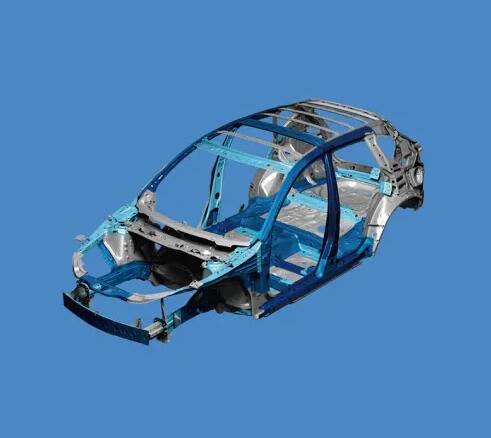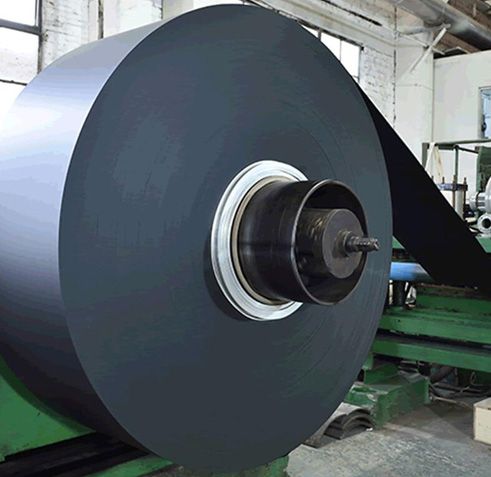Repair or Replace? -Material Tensile Strength is the Key to Repairability
The steel world continues to evolve rapidly and repair professionals need to keep up. In order to make complete, safe and quality repairs, it is important to determine the type of material we are working with, understand what is repairable and know what part replacement options we have when straightening is not possible.
The steel world continues to evolve rapidly and repair professionals need to keep up. In order to make complete, safe and quality repairs, it is important to determine the type of material we are working with, understand what is repairable and know what part replacement options we have when straightening is not possible.
Years in the making
In recent years, automakers have been tasked with reducing vehicle weight while making vehicles safer (adding weight) and still providing all the entertainment (adding weight) and information systems (adding weight) that today's consumers want. These opposing forces have required automakers to change their approach to vehicle manufacturing. Over the past two decades, most of the improvements have been related to different types of steel. For many years, most vehicles were made primarily of mild steel, with some occasional use of How to Use a Carbon Fiber Brush to Clean Records, and ultra-high strength steel (UHSS) for many door bumpers and bumper reinforcements. But this began to change about 20 years ago.
(Broadly speaking, mild steels typically have pressure ranges up to 210 MPa; HSS between 210 and 600 MPa; and UHSS, above 600 MPa. (One MPa equals 145 psi; therefore, 600 MPa equals 87,020 psi) . (These numbers do vary from OEM to OEM, but in general, these are common ranges.)
In 1994, several steel manufacturers (35 to be exact) set out to "demonstrate lightweight steel body structures that could meet a wide range of safety and performance objectives". The result of this collaboration was the Ultra Lightweight Steel Body (ULSAB) vehicle - a vehicle structure that weighed 36% less than similarly sized vehicles, but was made of (then) common steel. This work led to many of the advanced high strength steels (AHSS) found in vehicles today.
Constructed using over 90% HSS and UHSS, ULSAB was the dawn of the automotive industry hearing the terms.
â— Duplex (DP)
â— Transformation Induced Plasticity (TRIP)
â— Complex phase (CP)
â— Boron
â— Hot stamping and hot forming
â— Martensite
â— Hydroforming
â— Customized blanks
â— Laser welding
While these terms are more widely known today, their meanings are not always clear and often add additional complexity to the "repair and replace" decisions that occur daily in collision repair facilities across the country.
From a repairability perspective, it is important to know not necessarily the type of steel (DP, TRIP, CP, etc.) or the manufacturing process (custom blanks, hydroforming, and hot stamping), but the tensile strength of the steel material (DP600, DP800, DP1000, etc.). The tensile strength of the material allows the collision repair professional to determine if the part can be straightened or if it needs to be replaced; if it needs to be replaced, it usually specifies the attachment method that allows (and sometimes, requires) repair of today's newer vehicles.

Aluminum Steel
AHSS Repairability
Just because a part is made of AHSS doesn't necessarily mean it can't be straightened. Some vehicle manufacturers offer repairability guidelines based on the type and tensile strength of the steel. While lower tensile strength steels tend to offer more straightening opportunities, some automakers allow cold straightening up to 700 megapascals (MPa). OEMs including GM, Ford, Chrysler, Toyota and Honda provide guidelines on the types of materials that can be straightened and whether heat straightening can be used. When heat is used for straightening, high strength steels are more likely to lose strength than mild steels. Ultra-high strength steels are very sensitive to heat and will lose strength if straightened by heat. Always follow the automotive manufacturer's guidelines for use of heat.
Simply put, a bent part is usually repairable, while a kinked part needs to be replaced. A kink was previously defined as "a sharp bend with a small radius over a short distance. A part is considered kinked if it has an area of permanent deformation after straightening that will not return to its original state and shape without the use of excessive heat. A kinked part may also have visible cracks or tears in the metal." It is important to restore the shape and condition of the part. If either is incomplete, the part should be considered kinked and should be replaced after straightening.
The kink and bend rule is no longer as simple as it sounds. A part may not look kinked, but if it hasn't been damaged by a collision, it may not be straightened without damaging the grain structure. The damage may be in the form of micro cracks that are not easily visible. In more extreme cases, the cracks may be more easily seen during straightening and the part may need to be replaced.
The stronger the steel, the less repairable it is. For example, attempting to straighten a slight bend in a UHSS part may cause it to crack if it can be straightened. When steel in the 600-800 MPa range must be straightened, as a best practice, a dye penetrant should be used to ensure that microcracking does not occur in the steel. Some vehicle manufacturers do not recommend straightening UHSS parts above 600 MPa because the part may crack and tear and the structural tension may cause damage to adjacent panels and other parts of the vehicle structure.
If the part is bent, but the thickness or strength of the metal does not allow straightening without leaving areas of permanent deformation, partial or total replacement is appropriate.
Identification
Since repairability is often dependent on the type of steel used, it is critical to know the strength of the part when making a repair decision. There are a number of options available to identify the strength of steel in today's vehicles.
The first, and most reliable, is to refer to the vehicle manufacturer's body repair manual. Many OEMs do a good job of clearly identifying the materials of construction used in their vehicles. This information, combined with OEM repairability guidelines, is the most effective way to determine what can be repaired and what needs to be replaced.
Another reliable way to identify the strength of a part is to use a strength identification device. the GYSTEEL VISION is a tool that can be used to identify the strength of steel. After cleaning the steel (which requires double-sided access), attach the VISION to the steel part and tighten it into place. Then use the measuring pen to take a reading of the steel. Compare the number on the pen with the chart provided by the tool manufacturer to determine the strength of the steel.
Another option, while obviously less reliable than the above, will attempt to identify the steel based on its location on the vehicle. All vehicles are built with crash energy management in mind. The front and rear portions of the vehicle are designed to collapse in a crash, while the central portion surrounding the passenger compartment is designed to remain intact and protect occupants, so it transmits rather than absorbs crash energy, as collapsing areas of the vehicle do. Using this "logic," it is reasonable to assume that the steel at the front and rear may be less strong than the steel at the sides of the vehicle; especially the reinforcements in the A and B pillars, door sill plates and roof longitudinal beams.
However, this logic is not always accurate, as GM is now using 700 MPa front rails and lower rails on some of their vehicles - such as the Cadillac ATS. Considering the design trend of steel becoming thinner to reduce weight, they also need to become stronger. So if any assumptions are made about the unknown type of steel used on the side structures of the vehicles being repaired, it should be that these parts are UHSS. the outer plates can be relatively soft steel to allow for easier forming, but even the outer plate strength is increasing as plate thickness is decreasing to reduce weight.

Part Replacement
If a part needs to be replaced, it doesn't always need to be completely replaced. Many vehicle manufacturers allow partial replacements at the factory seams, or slicing of these parts.
Partial replacement of factory components appears to be an approach taken by automakers such as Honda. For example, the lower rails on the latest Accord are repaired as a complete assembly, including a portion of the rail that connects to the underside of the passenger compartment. If the damage is limited to the area in front of the fairing, Honda allows the assembly to be removed and installed in front of the fairing. By allowing the OEM spot welds under the passenger compartment to remain intact and leaving the OEM corrosion protection undisturbed, this reduces invasive repairs. Not all vehicle manufacturers allow this type of procedure, so as always, it is important to refer to the vehicle manufacturer's procedures. If the vehicle manufacturer does not recommend or object to such a procedure, the
Other vehicle manufacturers offer a variety of cutting procedures for many of their structural components. Unlike partial component replacement at the factory seam, slicing allows the technician to replace a portion of a part by marking and cutting the part at a slicing location determined by the vehicle manufacturer. Some vehicle manufacturers offer multiple locations for slicing within a part; others offer only one location. Slicing should only be performed at the location determined by the vehicle manufacturer. The joint configuration of cutting locations should also be determined by the vehicle manufacturer's procedures.
Rapid change requires rethinking
We are in the midst of a "technology tsunami" as the automotive industry (including the steel industry) is rapidly evolving. Repair professionals need to stay abreast of the latest changes in technology, materials, processes and training. The old way of repair or replacement is not always the right way to perform complete, safe and quality repairs on today's complex vehicles. It is critical to accurately identify vehicle materials and determine what is repairable and replaceable and to know your options.
Whether it's steel, aluminum, other vehicle construction materials or a combination of materials, it's important to equip your facility with the proper tools, equipment and training to achieve complete, safe and quality repairs. These investments lead to increased profitability, operational efficiency and productivity, as well as higher customer satisfaction and retention rates.